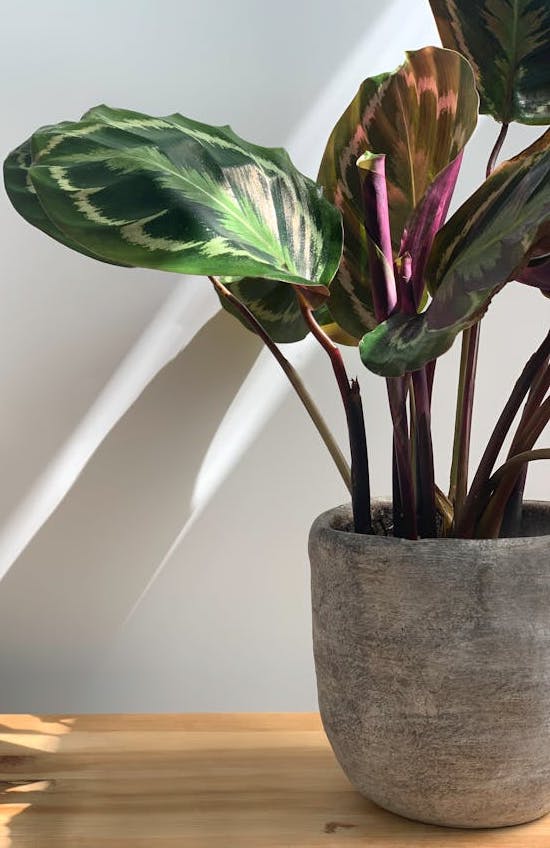
Calatheas, celebrated for their ornately patterned leaves and the unique phenomenon of leaf movement in response to light, are among the most visually captivating houseplants. Here’s a detailed guide on how to welcome and care for your new Calathea, ensuring it thrives in its new environment.
Welcoming Your Calathea Home
Unboxing: Carefully remove your Calathea from its packaging. It’s typical for plants to exhibit stress signs like limp or drooping leaves after transport. Allow your new plant to settle into its new home gradually.
Inspect for Damage or Pests: Thoroughly examine your Calathea for any signs of damage or pests. Addressing these issues promptly is crucial to prevent them from exacerbating.
Acclimatization: Initially, place your Calathea in a location that avoids direct sunlight as it adjusts to your home's environmental conditions.
Creating the Ideal Environment
Light Requirements: Calatheas thrive in moderate to low light settings. Bright, indirect sunlight from a north-facing window or a location shielded from intense sun is optimal, as direct light can damage the leaves.
Temperature: Keep your Calathea in a warm environment, ideally between 65°F and 75°F (18°C-24°C). Avoid exposure to drafts, heating vents, and air conditioning flows to prevent stress.
Humidity: High humidity levels, around 60% or more, are ideal for mimicking their natural rainforest habitat. Achieve this with a humidifier, regular misting, or a pebble tray with water.
Caring for Your Calathea
Watering: Keep the soil consistently moist but not waterlogged. Water when the top inch of soil dries out, using lukewarm, distilled, or filtered water to avoid chemical burns from tap water.
Feeding: During the growing season (spring and summer), fertilize your Calathea monthly with a diluted, balanced fertilizer. Reduce to every six weeks in fall and winter.
Repotting: Repot every 1-2 years in spring, choosing a pot just one size larger to avoid overwatering and to minimize stress on the plant.
General Maintenance
Pruning: Cut away yellow or brown leaves at the base of the stem to promote energy focus on new growth, keeping your Calathea looking lush.
Cleaning: Wipe the leaves with a damp cloth to remove dust, which enhances photosynthesis and keeps the plant healthy.
Pest Control: Monitor for pests like spider mites and aphids. Treat any infestations with insecticidal soap or neem oil according to the product’s instructions.
Troubleshooting Common Issues
Curling Leaves: This may indicate under-watering or low humidity. Adjust your watering routine and humidity levels accordingly.
Brown Leaf Edges: Often caused by low humidity or exposure to fluoride/chlorine in tap water. Switch to filtered water and increase humidity.
Fading Leaf Color: Typically due to excessive direct sunlight. Relocate your plant to an area with suitable indirect light.
Conclusion
Calatheas offer a stunning display of the tropics' lush vibrancy and dynamic beauty. With the right care from the start, these plants can transform any indoor space into a vibrant rainforest scene. Attending to their specific needs will ensure your Calathea remains a healthy and dramatic feature in your indoor garden.